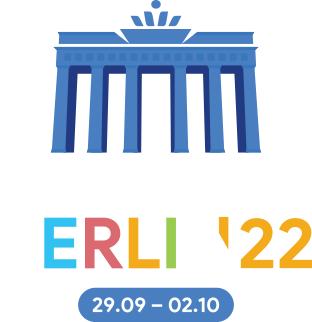

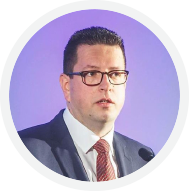
Loránt Vincze
Member of the European Parliament
President of FUEN
There are many reasons FUEN can call Germany and Berlin its home. First of all, our headquarters are in Germany, in Flensburg, and we also have an office in Berlin. Our oldest and largest Working Group, that of the German minorities – AGDM, is also located in Berlin. Secondly, there is the trust we share, built over time, which clearly shows in the German government’s decision to entrust FUEN with coordinating the work of the German minority organisations inside of AGDM. Thirdly, Germany is the main financial supporter of the FUEN.
But this relationship is not only about finances: for a long time, Germany has been and is the most important supporter and promoter of minority rights in Europe. We have many common goals, and this is now also shown in the German government’s coalition agreement, which states: „We proactively support the Minority SafePack Initiative and are implementing it in Germany. We are expanding projects for the preservation and development of minorities, their languages and culture.” Germany’s stand on minority rights also applies at home, as our many member organisations from the different lands of Germany can attest. The Minderheitenrat, the common forum of the Danes, Sorbs, North Frisians, Sinti and Roma in Germany is going to be the host of the FUEN Congress.
Since its founding in 1949 FUEN has made several efforts to involve minorities from the Eastern Bloc in its activities, but up until 1990 this was not possible. For decades Berlin has been the symbol of the division between East and West, oppression and freedom, dictatorship and democracy. It all changed in November 1989.
The fall of the Berlin Wall was the starting point for change for the whole of Europe, and the FUEN finally had the chance to become the organisation it was envisioned to be, uniting minorities from all over Europe: in the decade that followed the fall of the Iron Curtain, FUEN has doubled the number of its member organisations. Berlin has become the symbol of change, of unity, of freedom. And we will always feel at home here.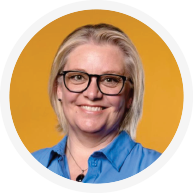
Gitte Hougaard-Werner
Chairwoman of the Council of the Four National Minorities in Germany
Hjertelig velkommen,
Wutrobnje witajce/Witajso k nam,
Latscho diewes,
Hartlik wäljkiimen/Hatelk wäilkemen
and welcome to the FUEN Congress here in Berlin!
As you can see above, Germany is home to a variety of four autochthonous national minorities, representing three language groups and six official minority languages. Nevertheless they are united in the Minority Council of Germany to foster their common political interests.
As chairwoman of the council I am glad and honoured to welcome you in the name of the Danish Minority, the Lusatian Sorbs, the German Sinti and Roma and the Frisians. We are grateful to be host to the FUEN-Congress in 2022, undoubtly taking place in troubled times especially for many minorities across Eastern Europe. The more we are looking forward to a successful, encouraging and inspiring Congress in Berlin. Thus we hope to add some impulse to it for constructively dealing with minority issues from our perspective and experience.
I wish you many interesting encounters and inspiring moments here in Berlin!
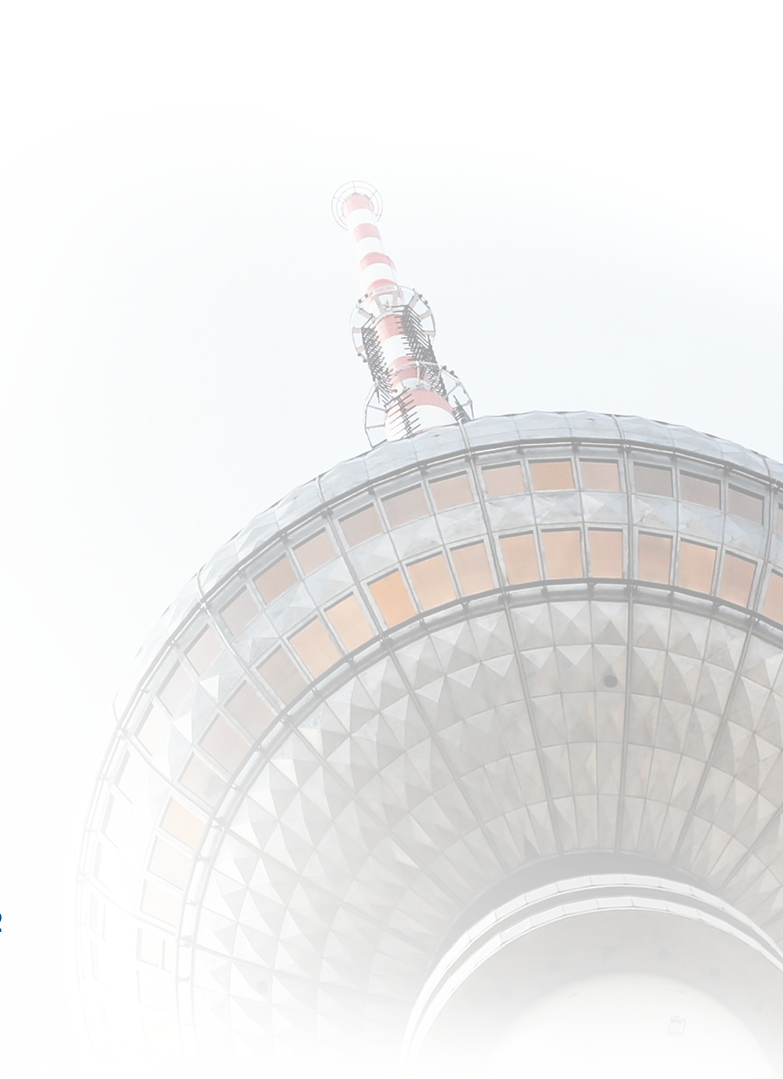

29 September – 2 October 2022
Berlin, Germany
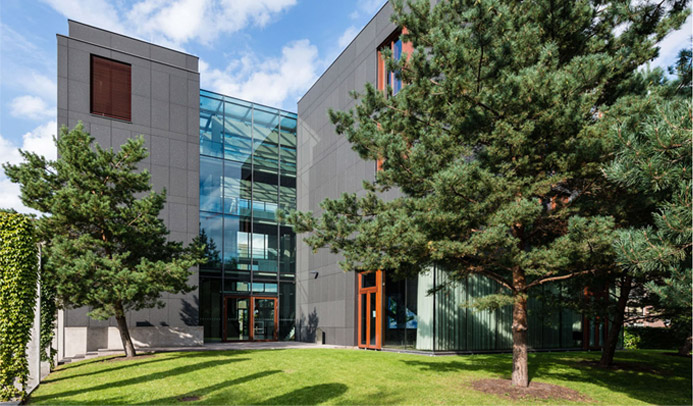
Representation of state Brandenburg in Berlin
In den Ministergärten 3, 10117 Berlin, Deutschland

H4 Hotel Berlin Alexanderplatz
Karl-Liebknecht-Str. 32, 10178 Berlin, Deutschland
1 night between 29 Sep – 2 Oct
1 night package2 nights between 29 Sep – 2 Oct
2 nights package3 nights between 29 Sep – 2 Oct
FULL packageNo accomodation
Only Congress

By Regional Train / Regionalbahn / S-Bahn
By Bus to ZOB • Central Bus Station
By Train to Berlin Hauptbahnhof • Central station
There are several options to continue to H4 Hotel Berlin Alexanderplatz with public transport, look them up in Google maps here.
Click here for Google Maps directionsThere are four autochthonous national minorities in Germany, the Frisians, the Danes, the German Sinti and Roma and the Lusatian Sorbs, whose matters are dealt with by the Minority Council. The work of the Minority Council consists primarily of promoting and protecting the minorities. Thus, the Minority Council also functions as a representative of the minorities’ interests and as a link between the Federal Government and the German Bundestag.
The work of the Minorities Council is supported by the Minorities Secretariat, which is based in Berlin. The current chair of the Minorities Council is held by Gitte Hougaard-Werner, chair of the Sydslesvigsk Forening (SSF).
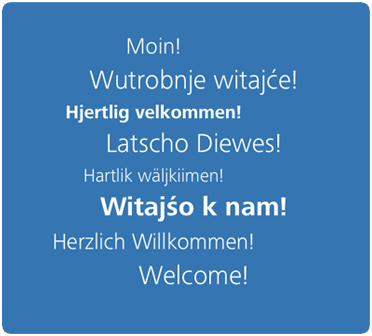
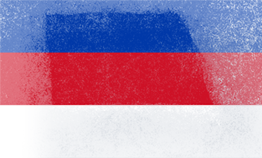
The Sorbs in Germany are settled in the east of Germany and they are a state-recognised national minority. The Sorbian minority only exists in Germany and they live in Upper Lusatia and Lower Lusatia. The Sorbian people have their roots in Slavic and settled in Lusatia about 1500 years ago.
According to official figures, there are around 60,000 Sorbs. The Sorbian minority has its own flag, an anthem and the Sorbian language, which is officially recognised by the German state. The everyday language is Sorbian and German, whereby a distinction is made between Upper Sorbian and Lower Sorbian/Wendish.
Through various media, cultural events and foundations, the minority strives to maintain the Sorbian language, culture and identity. A cultural and festive highlight is the "Vogelhochzeit" (Bird Wedding) in January.
The Lusatian Sorbs organise themselves under the umbrella of the Domowina - Bund Lausitzer Sorben, which has 13 associations and 5 regional associations.
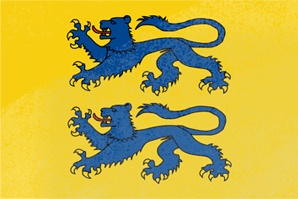
The Danish minority in Germany is one of the four state- recognised minorities in the Republic. The Danish minority is based in the north of Germany and has its headquarters in Flensburg, however the minority is represented as far as the district of Rendsburg-Eckernförde. The settlement area is also referred to as Sydslesvig/ Südschleswig. The SSF- Sydslesvigsk Forening is the main cultural organisation, although the minority is politically active with its own party, SSW, Südschleswigschen Wählerverband.
The minority is integrated into the school system and has numerous schools where teaching is mainly in Danish. The Danish minority runs a Danish daily newspaper and organises numerous events. Politically, the Danish minority is represented at all levels, and since autumn 2021 it is even represented at federal level with a member of the German Bundestag. Public holidays are celebrated according to Danish tradition and customs.
Around 50,000 people declare themselves to be
part of the Danish minority in Germany.
The Sinti and Roma have been living in Germany for about 600 years. Depending on where they live, the minority calls itself Sinti or Roma. The minorities living in Western and Central European countries are more commonly called Sinti, whereas those from Eastern and South-Eastern Europe are called Roma. The first records of Sinti and Roma in Germany date back to 1407.
In addition to German, the approximately 60,000 Sinti and 10,000 Roma living in Germany speak Romani, which is the minority language.
The Sinti and Roma minority is organised in various associations, with one of the central associations being the Central Council of German Sinti and Roma (Zentralrat der Deutschen Sinti und Roma).
Johann Trollmann
German Sinti boxer
1928

On October 24, 2012, the national memorial to the Sinti and Roma murdered under National Socialism was inaugurated in the presence of Federal President Joachim Gauck and Federal Chancellor Angela Merkel, as well as numerous survivors of the genocide. The memorial designed by the renowned artist Dani Karavan is located between the Brandenburg Gate and the Reichstag building.
The location and conception of such a monument had been the subject of political debate for more than twenty years. With this central place of remembrance in the heart of Berlin, the Federal Republic of Germany has emphatically acknowledged its special historical responsibility towards the Sinti and Roma.
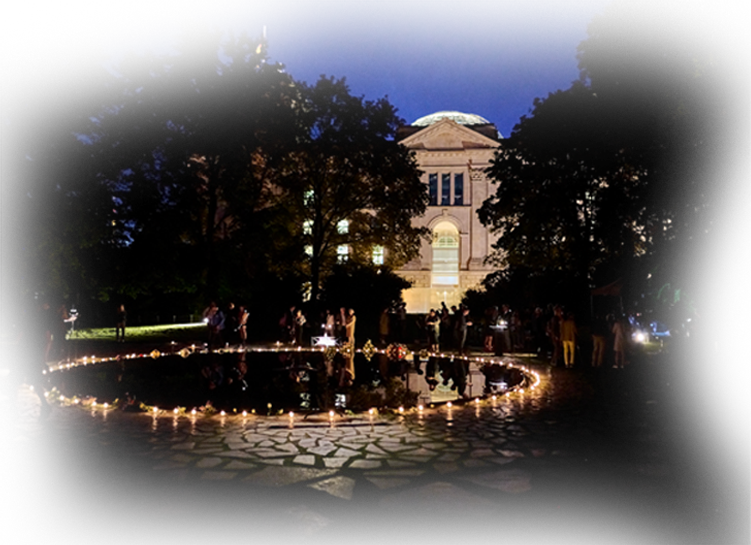

The Frisian ethnic group in Germany lives on the west coast in Schleswig-Holstein and in north-western Lower Saxony. About 60000 people consider themselves Frisians. The North Frisians live in North Frisia, the East Frisians in north-western Lower Saxony, and the Sater Frisians in Saterland and in the north-western part of the district of Cloppenburg. Depending on their geographical location, the Frisians consider themselves to be North, East or Sater Frisians. Outside Germany, there are also the West Frisians, who are native to the Netherlands.
There are numerous organisations that work to preserve the Frisian language, culture and identity. These are united under the umbrella organisation Frasche Rädj.

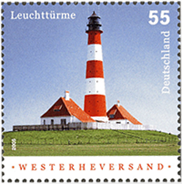

The FUEN Congress 2022 will take place in the most populated city in the EU. The capital of the Federal Republic of Germany has around 3.7 million inhabitants living in an area of 892 square kilometers. Berlin is not only the capital, but also a city state, i.e., one of the 16 federal states of Germany. The metropolis consists of twelve districts.
Incidentally, Berlin is also home to an office of the Federal Union of European Nationalities the Youth of European Nationalities, and the Minorities Secretariat.
After the end of the Second World War in 1945 until 1989, Berlin was divided by the Berlin Wall into East Berlin (DDR) and West Berlin. With the reunification in 1990, Berlin became the capital of the new Germany. Politically, the city is also of central importance. The Federal Government, the Federal President, the German Bundestag and other political institutions have their headquarters in Berlin.
The vibrant metropolis is considered a cosmopolitan city and its architecture, nightlife and creative and cultural scene have attracted an international audience for years.
Suggestions for sights, museums, and exhibitions

Brandenburger Tor
The Brandenburg gate has gone from being a symbol of division to a symbol of German unity.
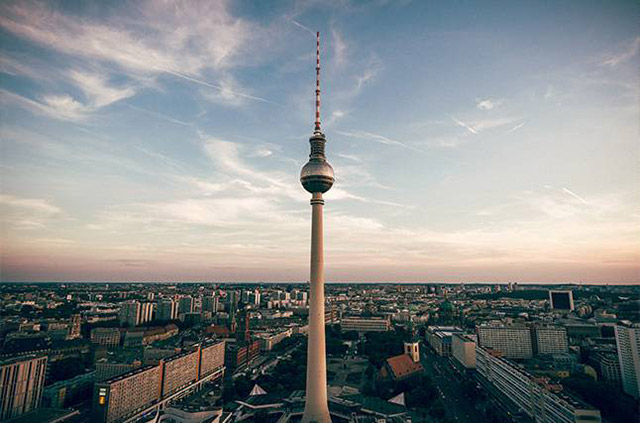
Fernsehturm and Alexanderplatz
The Berliner Fernsehturm (TV Tower) near Alexanderplatz is the tallest building in Germany and also Berlin's most distinctive landmark.

Checkpoint Charlie
The former border checkpoint on Friedrichstraße is an attraction for visitors from Germany and abroad.
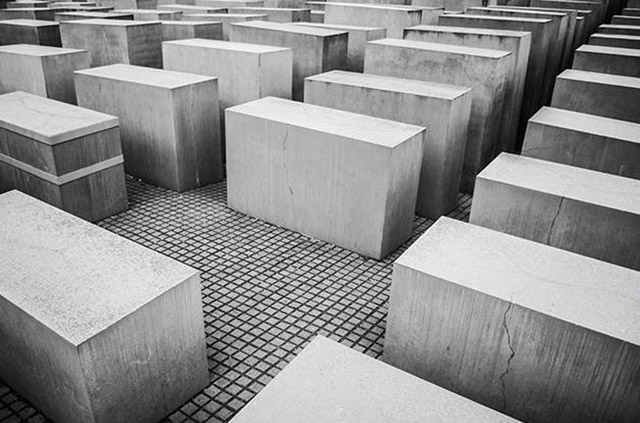
Holocaust-Memorial
The Holocaust Memorial is dedicated to the memory of the Jews of Europe murdered by the National Socialists.
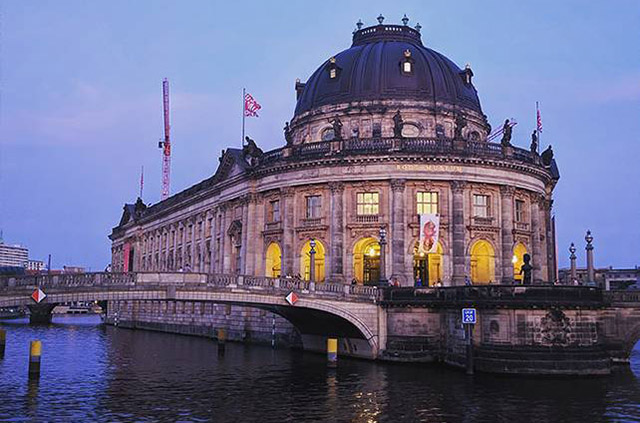
Museumsinsel
The Museumsinsel in the centre of Berlin is one of the most outstanding museum complexes in Europe and is a UNESCO World Heritage Site.
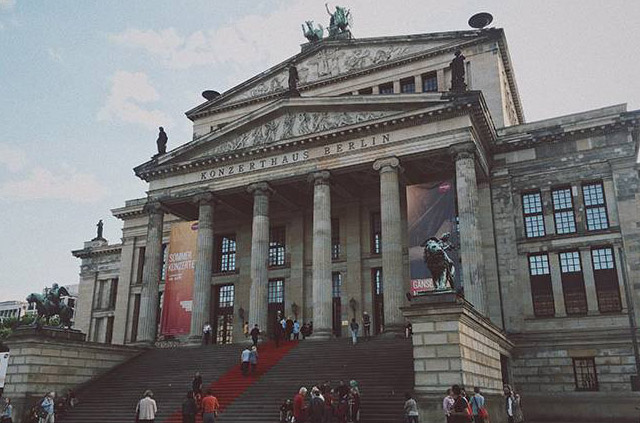
Gendarmenmarkt
Gendarmenmarkt is one of the most beautiful squares in Berlin. It is framed by three monumental buildings: the German Cathedral, the French Cathedral and the Concert Hall.
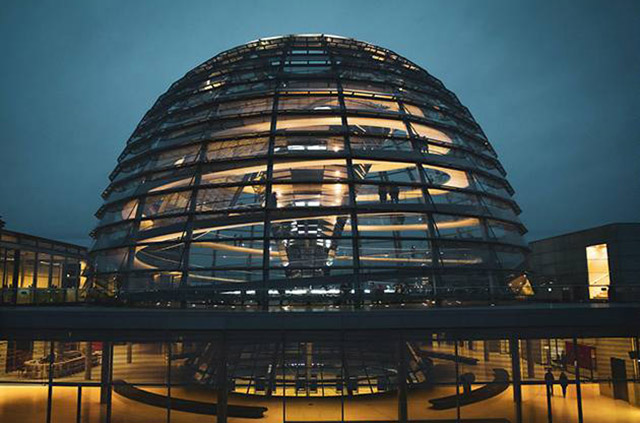
Reichstag
The Reichstag building is the seat of the German Bundestag and one of the most visited sights in Berlin. The glass dome in particular is an attraction for Berliners and tourists.
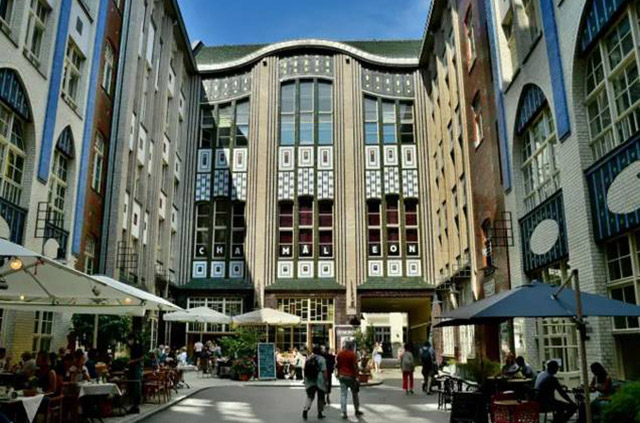
Hackesche Höfe and Hackescher Markt
Hackesche Höfe and Hackescher Markt in Mitte are popular with tourists and Berliners alike. The historical ensemble of buildings and the square in front offer a mixture of shops, culture and nightlife.
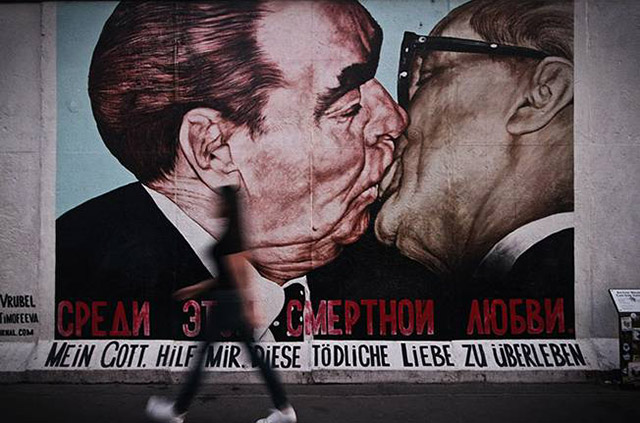
East Side Gallery
The East Side Gallery is a remnant of the Berlin Wall. Artists made it the longest open-air gallery in the world.
A small selection of thematic exhibitions
„Citizens with equal rights“
Exhibition curated by the Documentation and Cultural Centre of German Sinti and Roma as part of the interactive exhibition on the history of Berlin „Berlin Global“.
Humboldt Forum, Schloßplatz 1, 10178 Berlin
Website
Parliamentary History Exhibition of the German Bundestag
Deutscher Dom, Gendarmenmarkt 1, 10117 Berlin
Note - The contents are exclusively in German
Website
Erlebnis Europa
Exhibition in the Europäischen Haus Berlin
Unter den Linden 78, 10117 Berlin
Experience how European politics is shaped and how you can become active yourself. In 24 European languages!
Website
Dokumentationszentrum Flucht, Vertreibung, Versöhnung
Stresemannstraße 90, 10963 Berlin
Place for learning and remembrance on flight, expulsion and forced migration in history and the present day.
Website
Alltag in der DDR
Museum in the Kulturbrauerei
Knaackstr. 97, 10435 Berlin
Website
Current information on museums and exhibitions in Berlin
https://www.smb.museum/ausstellungen/aktuell
https://www.berlin.de/ausstellungen
FUEN BERLIN
Kaiser-Friedrich-Straße 90, Middle building 2nd floor, D-10585 Berlin, Germany
Phone: +49 30 364 284050
Email: congress@fuen.org
